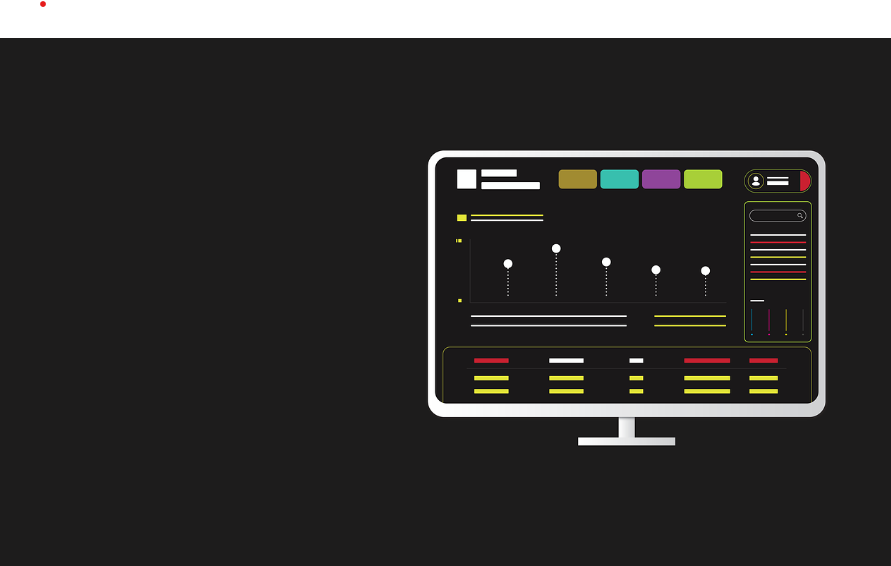Introduction
The significance of user interface (UI) as well as user experience (UX) design in our world, where technology reigns supreme, cannot be exaggerated. The two aspects of software development that are UI/UX Design, have morphed from being footnotes to pivotal elements that guide victorious digitised engagement.
In this article, we’ll plunge into the domain of UI/UX design, unearthing how it has reshaped software creation by reinventing our interaction with technology.
We will delve into core fundamentals, current design movements, and the influence of human-centred attitudes about digital experiences.
Understanding UI/UX Design
Defining the Concept of UI/UX Design: The term UI/UX design refers to the art of skilfully crafting user interfaces and experiences that are not only visually attractive but also highly efficient and user-friendly. It incorporates two essential components:
Creating a User-Focused Interface (UI): concentrating on how elements are arranged, visual constituents, and interactive elements found in an app or site
Creating a User-Centric Experience (UX): concentrating on ensuring users receive an overall sense of satisfaction and practicality while using a product, making sure it fulfils their expectations and needs.
At the heart of UI/UX design is the underlying principle of the user-driven design process. This attitude places users’ needs, preferences, and behaviours above all else during the creation process.
By comprehending specific user archetypes and their objectives, designers can shape interfaces tailored to individual user demands.
The Evolution of UI/UX Design
During the infancy of software development, user interface and user experience (UI/UX) design was frequently an afterthought, leading to inelegant and unwieldy interfaces that end-users found daunting to engage with.
Nevertheless, as technology progressed and rivalry intensified, corporations began appreciating the ingenuity of design in magnetising and ensuring loyalty among their users. The transformation within UI/UX design stemmed from the adoption of human-centric principles as a foundation. This strategy spotlights compassion, empirical research on end-users, and gradual iterations across the design process, ultimately yielding products that forge deep connections with their intended audience.
Key Principles of UI/UX Design
- Design Thinking: UI/UX designers employ a design thinking approach, which involves empathising with users, defining problems, ideating solutions, prototyping, and testing. This iterative process ensures that designs are refined and improved based on user feedback.
- User Journey Mapping: Creating a user journey map helps designers visualise the entire experience a user has with a product. This enables them to identify pain points and opportunities for improvement.
- Interface Usability: Usability is a fundamental principle of UI/UX design. An interface should be intuitive and easy to navigate, reducing user frustration and increasing engagement.
- Interactive Design: Interactivity is a key aspect of modern UI/UX design. Interactive elements such as buttons, menus, and gestures enhance user engagement and create dynamic digital experiences.
5. Visual Design: Visual design encompasses aspects such as colour schemes, typography, and graphics. It plays a crucial role in conveying the brand identity and creating a visually appealing interface.
UI/UX Trends Shaping the Future
- Adaptive and Personalised Interfaces
The move towards adaptive and personalised interfaces is one of the most significant shifts in UX design. Thanks to advancements in artificial intelligence and machine learning, digital platforms can now analyse user behaviour in real-time and provide tailored experiences to users.
Imagine an app that learns your preferences and adapts its layout and content to meet your needs. A personalised experience is no longer considered a luxury but a necessity that empowers users and strengthens brand loyalty.
2. Immersive Augmented Reality (AR) Experiences
Augmented reality has taken Centre stage in recent years, and by 2023, it will redefine the user experience.
By integrating digital elements into the real world, AR creates immersive experiences that blur the boundary between the physical and digital worlds. From trying out virtual products before purchase to navigating AR-enabled city guides, users will enjoy a whole new level of engagement and utility.
3. Inclusive and Accessible Design
UX designers have rightly placed a high priority on inclusivity and accessibility. Our focus in 2023 will be on designing for users of all abilities in order to ensure that digital products and services are accessible to all.
In order to foster a more inclusive digital environment, features such as screen readers, voice commands, and intuitive navigation will become standard practices.
4. Emotional Design for Human Connection
Beyond functionality, emotional design is becoming increasingly popular as a way to connect with users on a deeper level.
Positive emotions, such as joy, trust, and empathy, can leave a lasting impression on the consumer. Expect to see more companies employing emotional design principles in 2023 in order to cultivate meaningful relationships with their audiences.
5. Motion Design and Fluid Transitions
As a component of UI/UX design, motion design adds dynamism and interactivity to interfaces.
Designers are pushing the boundaries of motion design in 2023 by incorporating fluid transitions and animations that seamlessly guide users through different states and interactions. Fluid motion design enhances usability and creates a more engaging and delightful user experience with smooth page transitions and subtle hover effects.
The Impact on Software User Interfaces
- Enhanced User Engagement: Well-designed UI/UX encourages users to spend more time interacting with software. Intuitive navigation and engaging visuals keep users hooked.
- Heightened User Contentedness: A pleasing user experience spawns heightened user contentment, which, consequently, nurtures brand allegiance and favourable evaluations.
- Diminished Learning Hurdle: Intuitive architecture diminishes the learning hurdle for novices, rendering it simpler for them to commence utilising computer programmes without extensive lessons.
Challenges in UI/UX Design
- Balancing Aesthetics and Functionality: Striking the right balance between a visually appealing design and a highly functional interface can be challenging.
- Staying Updated with Trends: UI/UX designers must continuously adapt to evolving design trends and technologies to remain relevant.
- Cross-Platform Compatibility: Ensuring a consistent user experience across different platforms and devices can be complex.
Conclusion
In summary, the field of UI/UX design has gone through a substantial overhaul in contemporary software engineering. From being an afterthought, it has transformed into a key element that can either make or destroy a digital product.
The adoption of design principles that focus on the user experience, the increased importance of human-centred design, and the inclusion of innovative trends have all played a part in this revolution.
The true power behind UI/UX design lies in its ability to amplify user interaction, elevate user gratification, and propel digital metamorphosis. As technological advancements continue to take place, the influence exerted by UI/UX design will only grow more significant in shaping future digital encounters.
Accepting this transformation holds more value than just following trends; it is an imperative move for companies aspiring to prosper within the digital domain.



